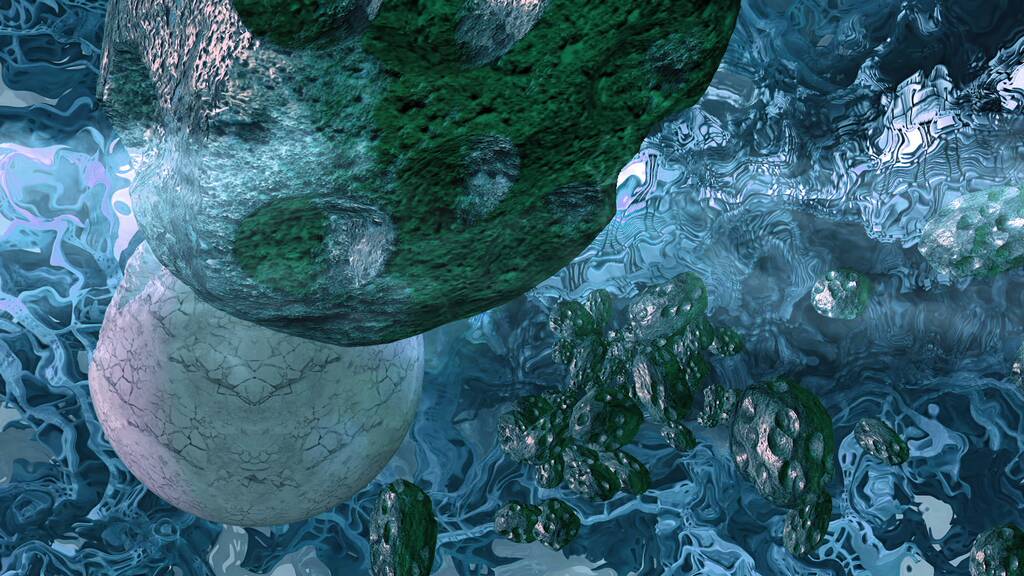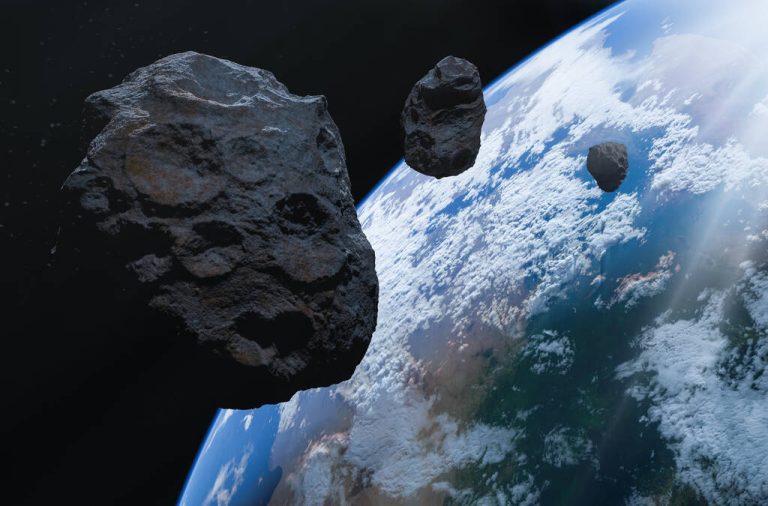Asteroid Alert: Emergency Measures Deployed for Possible 2032 Impact
A 100-metre wide asteroid, known as 2024 YR4, was discovered by an automated telescope in Chile, prompting global planetary defense protocols. Although its calculated impact probability for December 2032 is only 1.3%, the discovery has mobilized international space agencies and experts to enhance tracking, refine trajectory predictions, and develop potential reduction strategies. This coordinated response underlines the importance of ongoing space monitoring and international cooperation to safeguard our planet from even the most remote threats.
Summary:
- Asteroid 2024 YR4 discovered in Chile on December 27, 2024, by an automated telescope
- Estimated diameter of roughly 100 metres with a calculated 1.3% chance of collision on December 22, 2032
- Classified as a Level 3 threat on the NASA Torino Impact Hazard Scale
- Global response includes activation of the International Asteroid Warning Network and the Space Mission Planning Advisory Group
- Continuous tracking and future observations planned for 2028 to further refine its orbit
- Reduction strategies under consideration include deflection missions inspired by NASA’s DART mission

Introduction
In our modern era of advanced space observation, the discovery of near-Earth objects is not only a scientific milestone but also a crucial element of planetary safety. The recent detection of Asteroid 2024 YR4 has once again captured global attention, emphasizing that even relatively small celestial bodies can command international focus. This event is a reminder of our planet’s vulnerability in a vast universe and the need for a proactive stance in space monitoring. As scientists work to decode the asteroid’s trajectory, the incident serves as an educational moment about the complexities of cosmic surveillance and the coordinated response required when potential hazards are identified.
Discovery and Detection
On December 27, 2024, a routine scan of the night sky over Chile led to the detection of Asteroid 2024 YR4. This discovery was made possible by state-of-the-art automated telescopes designed to capture faint objects moving against the static backdrop of distant stars. The initial images revealed a fast-moving object, prompting immediate follow-up observations by astronomers worldwide.
The detection process involves advanced image processing and pattern recognition algorithms that can distinguish a moving asteroid from other celestial objects. Over the following weeks, scientists have been meticulously analyzing the data to calculate the asteroid’s orbit and velocity. The early indications show that the object, with an estimated diameter of about 100 metres, is on a path that brings it close to Earth. Although the calculated impact probability stands at 1.3% for an encounter in December 2032, further observations are essential to narrow down these predictions and either confirm or allay any concerns.
Impact Risk Assessment
Assessing the risk posed by near-Earth objects requires a deep understanding of several parameters, including size, speed, and trajectory. In the case of Asteroid 2024 YR4, experts have applied the NASA Torino Impact Hazard Scale to gauge the level of threat. This scale, which ranges from 0 (no risk) to 10 (certain collision with catastrophic consequences), is a standard tool used by scientists to communicate risk levels in a clear and accessible manner.
Currently, 2024 YR4 is rated as a Level 3 threat. This means that although the likelihood of an impact is extremely low, the uncertainty in its orbital path necessitates careful and ongoing observation. The Torino scale not only factors in the probability of impact but also considers the potential consequences of such an event. With a size of around 100 metres, an impact would not lead to a mass extinction like the one that wiped out the dinosaurs, but it could cause severe localised damage, particularly if the collision occurs over a densely populated area.
Over time, as more data is gathered and computational models are refined, scientists expect to adjust the risk rating. The current approach is one of caution—an acknowledgment that even a 1.3% chance is significant enough to merit continued surveillance.
International Response and Coordination
Upon confirmation of the initial observations, global authorities quickly activated a series of planetary defense protocols. Key organizations such as the International Asteroid Warning Network and the Space Mission Planning Advisory Group have mobilized to assess the situation further. These agencies are responsible for coordinating the observation efforts, sharing data across borders, and preparing strategies for potential intervention.
The global response reflects a blend of urgency and prudence, ensuring that all necessary resources are directed toward monitoring and analysis without inducing public panic. International coordination in such scenarios has proven invaluable, as shared expertise and technological capabilities enhance the accuracy of predictions and the feasibility of any needed intervention.
The mechanisms in place today benefit from decades of prior experience with asteroid threats. Past events, such as the reclassification of Asteroid Apophis, have laid the groundwork for a robust international system capable of rapidly responding to emerging cosmic hazards.
Asteroid 2024 YR4 Key Characteristics
The following table summarizes the essential data regarding Asteroid 2024 YR4:
| Feature | Value |
|---|---|
| Estimated Diameter | Approximately 100 metres |
| Discovery Date | December 27, 2024 |
| Impact Probability | 1.3% chance of collision on December 22, 2032 |
| Torino Scale Rating | 3 |
| Last Observed | January 2025 |
| Next Observation Window | Expected in 2028 |
This concise presentation of the asteroid’s characteristics helps both experts and the general public grasp the scale of the potential threat. It is a snapshot of current scientific understanding and an indication of the ongoing efforts to monitor the object.
Comparative Analysis of Notable Asteroid Encounters
To better understand the significance of Asteroid 2024 YR4, it is useful to compare it with other well-known near-Earth objects. One notable case is Asteroid Apophis, which in 2004 received worldwide attention due to its initially high risk of impact. Although subsequent observations led to a downgrade in its threat level, Apophis remains a benchmark in discussions about asteroid impact risk.
| Asteroid | Estimated Size | Initial Torino Rating | Current Impact Risk | Notable Missions/Responses |
|---|---|---|---|---|
| 2024 YR4 | Approximately 100 metres | 3 | 1.3% chance of impact | Continuous monitoring, potential deflection planning |
| Apophis | Approximately 370 metres | 4 (later downgraded) | Minimal after reassessment | Extensive global monitoring and research |
This table clearly compares the relative danger of these objects. It helps us understand how dangerous they are. Apophis, a large asteroid, first caused a lot of alarm. It seemed more threatening because it was big and had a high rating. However, scientists used better ways to observe it. These new techniques reduced how threatening Apophis seemed. Another asteroid, 2024 YR4, is smaller. Despite its size, it still needs attention. This is because there are uncertainties about its path in space. The word “orbit” means the path an object like an asteroid takes as it moves around in space.
Technological and Observational Strategies
Modern astronomy relies on an array of sophisticated technologies to detect and track near-Earth objects. The automated telescope in Chile, responsible for spotting 2024 YR4, is just one example of these cutting-edge instruments. Equipped with high-resolution sensors and advanced image processing capabilities, these telescopes can detect even the faintest objects in the sky.
Once an object is detected, data is immediately transmitted to research centers around the world where it is processed using complex computer models. These models calculate the object’s orbital parameters and simulate future trajectories based on gravitational influences and other factors. This process is critical for determining whether an object poses a significant threat to Earth.
In addition to optical telescopes, radar systems and space-based sensors also contribute to the detection and tracking of asteroids. The integration of data from multiple sources ensures that predictions are as accurate as possible. The advancements in computational modeling, in particular, have revolutionized the way scientists predict the paths of near-Earth objects, providing a robust framework for assessing impact risk.
Another significant technological development is the capacity to test asteroid deflection methods in controlled environments. NASA’s DART mission is an excellent example of how kinetic impact techniques can be employed to alter an asteroid’s trajectory. Although 2024 YR4 is not currently expected to hit Earth, the knowledge gained from these experiments could prove invaluable if a deflection is ever required.
Future Monitoring and Preparedness
Given the current uncertainties in the trajectory of Asteroid 2024 YR4, continuous monitoring is of utmost importance. Future observation windows, particularly the next opportunity in 2028, will be critical in providing more accurate data on the asteroid’s path. Astronomers are preparing a series of coordinated observation campaigns to track even the smallest deviations in its orbit.
The international scientific community is committed to refining predictive models and improving detection technologies. By pooling resources and expertise, countries are working together to establish a more comprehensive planetary defense network. This network will not only focus on 2024 YR4 but will also enhance our overall capacity to detect and analyze other near-Earth objects.
In parallel, simulation exercises and scenario planning are underway to prepare for a range of potential outcomes. These initiatives are designed to ensure that if a mitigation strategy becomes necessary, the global community can respond swiftly and effectively. The proactive measures being implemented today are a testament to the lessons learned from past encounters with celestial objects and the ongoing evolution of space defense strategies.
Even though the probability of an impact by Asteroid 2024 YR4 is low, scientists are not leaving any stone unturned when it comes to potential mitigation strategies. One of the primary methods under consideration is asteroid deflection. This approach involves altering the trajectory of the asteroid so that it misses Earth entirely.
One deflection method is the kinetic impactor technique, where a spacecraft is intentionally crashed into the asteroid at high speed. The impact, though not large enough to destroy the asteroid, would be sufficient to change its course over time. Another promising method is the gravity tractor, which involves positioning a spacecraft near the asteroid. The gravitational pull between the two bodies, though subtle, can gradually alter the asteroid’s path if maintained over a prolonged period.
The timeline for any deflection operation is critical. Early detection allows for a more extended window in which a mitigation strategy can be implemented. This is why continuous tracking and frequent observations are so essential. International agencies are discussing how best to coordinate these potential operations, ensuring that if an intervention is necessary, it can be executed with minimal risk to Earth.
Advancements in simulation technologies are also playing a crucial role in preparing for any eventuality. By running countless scenarios using supercomputers, scientists can model the outcomes of different deflection strategies and choose the most effective one. This proactive approach to planetary defense is one of the most encouraging developments in space science today.
Fun Facts
- Asteroid impacts have played a significant role in shaping Earth’s geological and biological history.
- Modern telescopes can now detect objects that are only a few metres in diameter.
- Planetary defense strategies have evolved significantly since the days when asteroid impacts were only a theoretical threat.
- International collaboration in space research has increased exponentially in recent years.
- Public interest in asteroid monitoring has grown, with many space agencies now hosting live updates on their websites.

